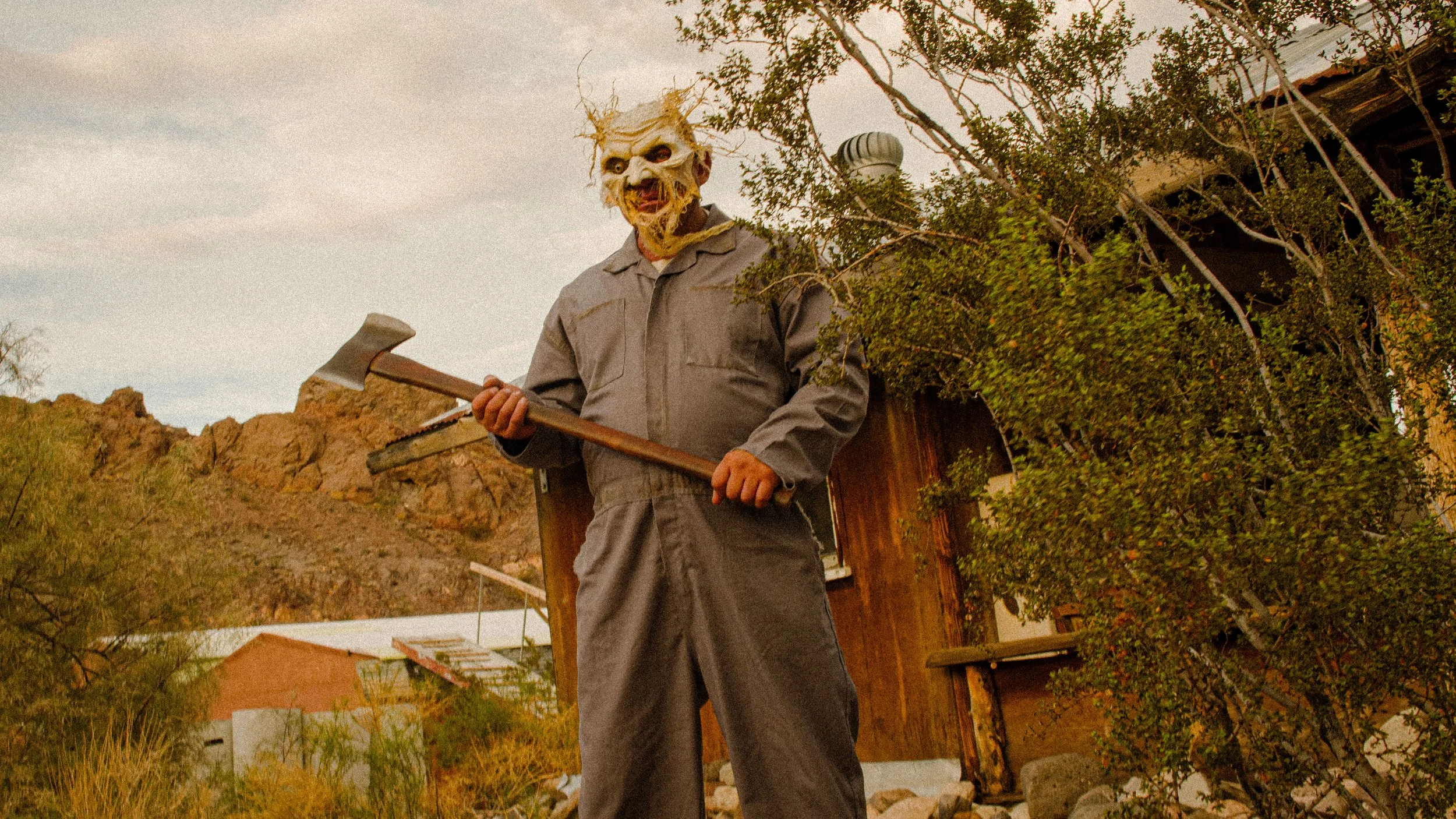Director Marcel Walz’s latest film, Brute 1976, is a blood-soaked, bell-bottomed descent into grindhouse homage. Co-written with Joe Knetter and released by Cinephobia Releasing, the film aims to channel the chaotic spirit of ‘70s horror staples like The Texas Chain Saw Massacre and The Hills Have Eyes. It mostly succeeds—but not without hitting a few potholes on the desert road to cult glory.
Set in the sweltering summer of 1976, the film follows Raquel (Gigi Gustin) and her girlfriend after their car breaks down near an abandoned mining town called Savage. At the same time, a group of models, photographers, and makeup artists (including Sunshine, played by Sarah French) are in the desert shooting a patriotic “salt and pepper” bicentennial spread. When the two storylines converge in Savage, the group finds themselves hunted by the grotesque Birdy family—a deranged clan of masked killers led by the hulking Brutus (Bishop Ali Stevens).
Walz, known for That’s a Wrap and Pretty Boy, brings his usual suspects—French, Gustin, and others—but it’s Adriane McLean as Roxy who delivers the most grounded performance. Gustin proves she’s got a scream queen face worth watching, and Dazelle Yvette brings eerie gravitas as Mama Birdy. Unfortunately, Sarah French’s delivery is once again mismatched for the material, and her performance sinks a critical third-act twist that already feels undercooked.
The film opens with a bang but quickly loses momentum. The pacing stutters, weighed down by a bloated ensemble and an uneven tone. It’s clear Brute 1976 was made with love for the era—everything from the score to the styling screams 1970s—but despite its vintage aesthetic, the clean visuals and inconsistent color grading rob the film of the grime that defined its inspirations. Editing choices, including some jarring jump cuts, also take the viewer out of the moment.
Still, when Brute 1976 leans into its grindhouse roots, it shines—particularly in its brutal set pieces. One glory hole scene (yes, you read that right) goes toe-to-toe with Terrifier in sheer audacity. There are solid fight sequences, especially involving Brutus, and the gore, while not wall-to-wall, is often effective. But horror veterans may find themselves wanting more: more grit, more carnage, and more character clarity.
There’s an awkward, last-minute attempt to inject commentary on race relations that feels shoehorned in rather than organically developed. And while the post-credits stinger teases the next entry—Brute 1986—the excitement may vary depending on your tolerance for nostalgia-driven horror with uneven execution.
Brute 1976 is a mixed bag: it’s gnarly, stylish, and at times genuinely unsettling, but it lacks the narrative focus and character work needed to rise above homage. For grindhouse diehards, it’s a fun-if-flawed ride. For everyone else, it might be better suited for a lazy Sunday afternoon stream.
Jessie Hobson





